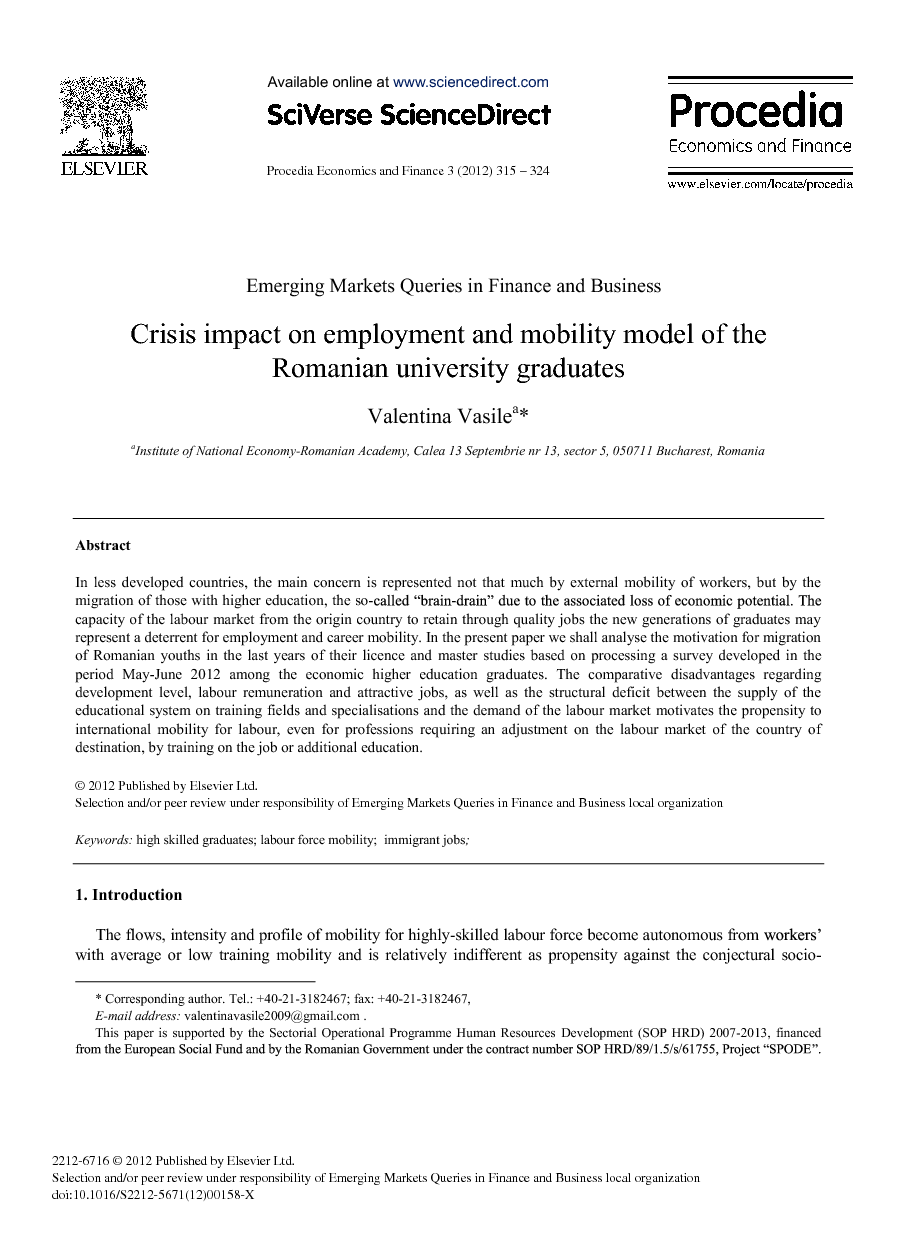ترجمه فارسی عنوان مقاله
تاثیر بحران بر استخدام و مدل تحرک اجتماعی دانش آموختگان دانشگاه رومانیایی
عنوان انگلیسی
Crisis Impact on Employment and Mobility Model of the Romanian University Graduates
| کد مقاله | سال انتشار | تعداد صفحات مقاله انگلیسی |
|---|---|---|
| 3816 | 2012 | 10 صفحه PDF |
منبع

Publisher : Elsevier - Science Direct (الزویر - ساینس دایرکت)
Journal : Procedia Economics and Finance, Volume 3, 2012, Pages 315–324
ترجمه کلمات کلیدی
- فارغ التحصیلان مهارت بالا - تحرک نیروی کار -
مشاغل مهاجر
کلمات کلیدی انگلیسی

